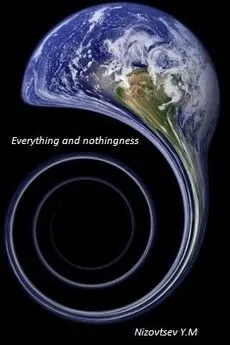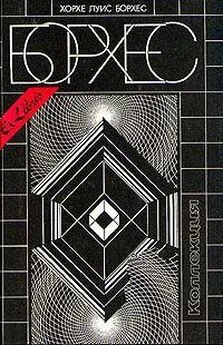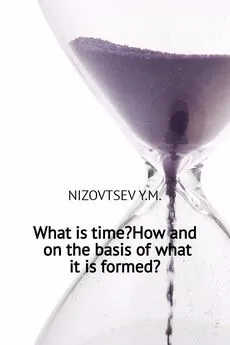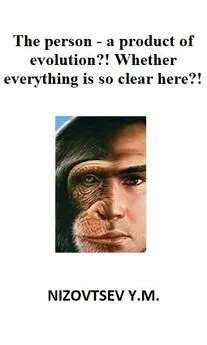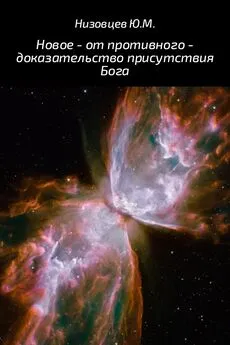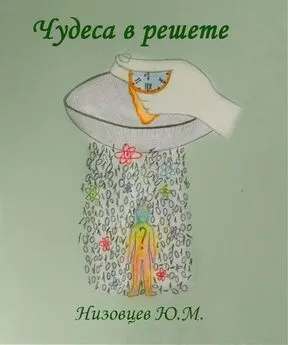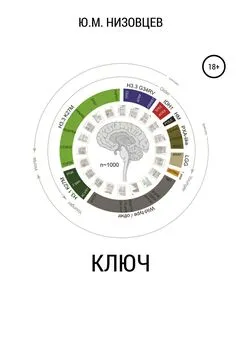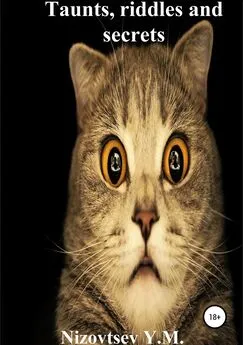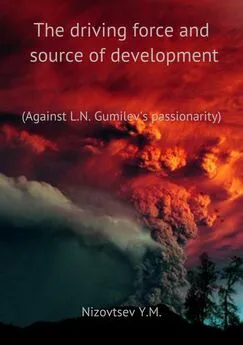Юрий Низовцев - Everything and nothingness
- Название:Everything and nothingness
- Автор:
- Жанр:
- Издательство:Array SelfPub.ru
- Год:неизвестен
- ISBN:нет данных
- Рейтинг:
- Избранное:Добавить в избранное
-
Отзывы:
-
Ваша оценка:
Юрий Низовцев - Everything and nothingness краткое содержание
Everything and nothingness - читать онлайн бесплатно ознакомительный отрывок
Интервал:
Закладка:
For example, for each individual consciousness in the world known to us the pause between moments of copying or updating drops out owing to physiological features of living beings, gaps between positions of updating disappear for consciousness of the living beings, the world gets motion and smoothness in development, that is directly reflected in human consciousness, and this reality, which "comes" from sensations, acquires the character of the true human beingness.
The world is represented to the person as the beautiful in its sunsets and sunrises, singing of birds and rustle of waves, but the person cannot only luxuriate in it – in foundation of this world is laid the deepest contradictions going still from Uniform, which is everything and nothingness.
Our world is built on contrasts and struggle of everything with everything: the birth is near with death, wonderful blossoming of the nature – with awful decomposition of corpses; still, warm night is replaced by a catastrophic storm. Among people dominates not only love, respect and mercy, but also as equals with them rule hatred and fear, rage, envy and despair.
However only in the conditions of deadly struggle with each other, in sufferings and sorrows consciousness can develop, finding the road to mercy and love. Whatever it was, but consciousness itself forms such world which in other measurements can be kinder, but all the same constructed on contrasts and struggle.
So that consciousness knows that does, and as to conduct this work, the benefit all this process has no beginning and in it there will be no end though every "moment" the basis of our world "arises", and at the next moment – "disappears", more precisely, it is updated etc.
Beingness which is presented to us as such reliable, real, vast, corresponding certain laws, containing macro– and microcosm, elementary particles and radiations, galaxies and the living beings, in the basis has no more than information, more precisely, – the high-frequency holographic formations bearing information. They are equal to zero integrally each position of updating owing to manifestation of each wave-like formation jointly with the same formation in antiphase. Such balance of a holographic projection of Uniform corresponds to timeless Uniform which is nothingness, becoming by everything only through own projection in time.
This process cannot have the beginning and the end because the dual system of Creation is steady in the functioning and manifestation, which excludes non-existence due to interaction between the infinite and the finite.
This system not only has no propulsor, but it formally is nothingness, making in any position zero in total. Therefore, it is nothing to fall apart, it need not begin and end.
On the other hand, the system of Creation isn't capable to be divided on independent Uniform and a separate holographic projection – system is a single whole, in which the form-building active is fueled by the passive losing its shape in finite formations.
The passive, losing a shape in finite (beingness), restores thereby a form of the active at their interaction. The active, thus, does not lose its basic shape and form-building abilities at the expense of the decaying passive in beingness, but the active also, "extracting" the passive from Uniform in the form of information copies for the period of existence of this finite, restores a form of the passive and change it,. So, by means of the address to the finite in the form of losing a shape of the passive the active becomes eternal on a form, properties and can keep all system of Creation in actual existence.
In spite of the fact that Creation on balance is zero, Creation also is everything, and therefore it can't but be manifested, demonstrating to itself in the person of the active this everything consistently and infinitely.
Creation, being everything and nothingness, comprises contrasts and denies itself, inasmuch in the person of the active constantly strives for novelty, destroying previous in itself and manifesting in this liberty of consciousness (the active). But everything, that passed, doesn't disappear completely, and it is kept in memory of consciousness (the active).
Therefore the dual system of Creation is active and passive; finite and infinite; changeable and constant; whole and part; uniform and scattered; motionless and in motion; reasonable and dark; live and dead; it wishes and refuses; it arises and dies away; it is one and another; it comes to life and perishes; it is equal to itself and opposite; it holds a form and spreads; it can't be, but it is there; it wants to learn about itself everything, but can't because of own infinity; the infinite in it denies the finite, but isn't capable to exist without it.
2.2. Death and consciousness
Existentialists, arguing on death, mean life, because death, as they suppose, is absence of existence, which doesn't interest them. Means, it is possible to speak about death only in the context of approximation to non-existence.
In particular, Heidegger writes about death so: “We have conceived death existentially as what we have characterized as the possibility of the impossibility of existence – that is to say, as the utter nullity of Dasien. Death is not “added on” to Dasien at its “end”; but Dasien, as care, is the thrown (that is null) basis for its death. The nullity by which Dasien's Being is dominated primordially through and through, is revealed to Dasien itself authsentic Being-towords-death. Only on the basis of Dasien's whole Being does anticipation make Being-guilty manifest. Care harbours in itself both death and guilt equiprimordially. Only anticipatory resoluteness understands the potentiality Being-for-guilty authentically and wholly – that is to say primordially” [4, p. 354]; “… In its death, Dasien must simply take back everything” [4, p. 356].
Thereby existentialists actually remove a problem of death and absolutely adequately transfer emphases on human life which proceeds always in anticipation of death so how the future death "will mobilize" everyone and he behaves itself respectively, knowing about death.
However such look to death and life is too surface because life is short, in it the person a little that may make even in case of very responsible behavior. Therefore such "one-time" life can't give satisfaction: people in it mourn too much and unimaginably hurry, aiming to get its "animal" pleasures which also quickly pass.
Such approach to death and life not really interests to the ordinary person. He needs disclosure of secret of death and in a consolation.
This secret together with a consolation try to provide materialists and religion who offer two different interpretations.
One, the materialistic, states: death means transition of the person to a non-existence – everything for him comes to an end.
And it, as some people consider, are perfectly because for any person after death there is nothing and he may have nothing else to worry.
As the saying goes: stopped suffer and calmed down forever. However, the special secret and a qualitative consolation isn't present here. But still many people agree with this approach. Nevertheless, with approximation of the end the certain concern comes even to them, and start prevailing thoughts about soul and the possibility of other life because the non-existence isn't interesting.
Another, for example, Christian interpretation, supposes that death is return of soul to God with different options (hell, Paradise, purgatory, but no more than that). This interpretation of death and its consequences for the person seems more attractive so as it promises something, however, isn't known that specifically and a little because soul gets there, from where there is no return, but it would be desirable to return and again quite good to live; but nevertheless, unlike "the materialistic end", such option of a posthumous outcome consoles by some determinacy in respect of saving consciousness (soul) in eternity, however, unclear for what purpose.
However both approaches take of the person as a basis, i.e. – as the finite and therefore are inadequate.
There is no person and there are no problems for him in the world, according to materialists, owing to disappearance of the person, as such.
There is no person and there are no problems for him again in the world and by results of the Christian attitude towards death so how the requital for deeds in the world during lifetime is transferred to external responsible force. However it is in itself nonsense: you did, but "uncle" will decide for you. It would be more fair most to evaluate a degree of own fault, time for you everything is over, knowing best of all about own deeds, but not to rely on strange force, moreover and solving everything finally and irrevocably because another life is not expected for you in the world as it is supposed by churchmen.
Thus, both of these interpretations of death are similar in the basis as well as under the main upshot: the world for the person disappears together with him after death.
It is curious that both materialists, and churchmen refute their concepts of beingness by own interpretation of the fact of death.
Materialists, considering the human consciousness as the highest manifestation of self-development of matter, at the same time by own interpretation of death as transition of the person from life to non-existence, thereby exterminates forever this highest manifestation of matter in its specific individual expression, reducing this highest expression of matter to zero, to a usual thing which is interesting to nobody, and the fact of appearance and disappearance which excites nobody.
Churchmen make another mistake. They, agreeing with extermination of a body as thing, "remove" consciousness of the person in "a locker" of paradise, hell or still something forever even if the person in life practically made nothing (and so most often and happens) that is nonsense so how this approach actually exterminates consciousness, removing it on "eternal storage".
Anyway, nobody can cancel the finite and the infinite. The infinite by itself is inexpressible. Therefore willy-nilly it should turn to the finite somehow, i.e. – to time for own though some expression. However the finite can't last infinitely as separate in own existence anywhere, but it can last discretely infinitely, i.e. being updated completely, in this updating becoming other every time, that is possible to treat as death and the birth.
Frequency update can be any within imaginable. Only thus the infinite can be manifested in the finite. But for this purpose it should be as the infinite and at the same time – as the finite in the infinity of updating, i.e. the infinite should be in two guises and comprise two contrasts in itself – the active and the passive that isn't so improbable because there is everything in infinity.
Thus, the only way of expression and manifestation of the infinite in the finite infinitely is the combination of the infinite, or eternal Uniform (everything and nothingness) and its frequency updated projection in the form of the hologram where the active (consciousness) "produces" the changes in copies of things (the passive) from Uniform, "creating" the basis (beingness) for own change, i.e. receiving life and development, but in the "intermittent" form, dying and reviving at all levels in the form of the things "linked" to consciousness which too together with a thing-body should die and be born, undergoing all burdens and horror in these processes, but remaining in the basis as immortal. So the infinite consciousness should be reconciled with this finite because other options of existence of beingness and everything that is in it, presumably, are extremely improbable.
Читать дальшеИнтервал:
Закладка:
